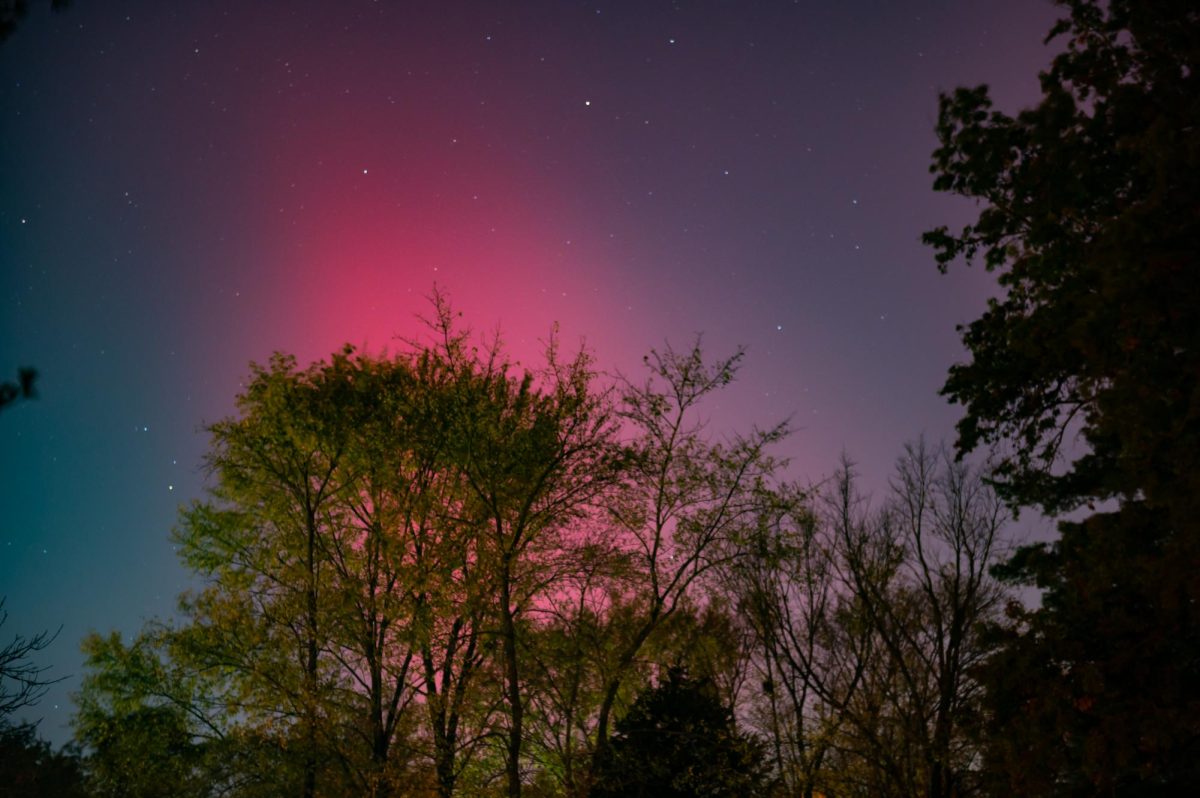In a Ted Talk, Founder of the Cloud Appreciation Society Gavin Pretor-Pinney said, “You don’t need to plan an exotic trip to find creative inspiration. Just look up.” Often clouds are represented with storms, dark skies and ominous foreshadowing. But is it possible to find beauty in such mundane things as clouds?
The Cloud Appreciation Society was formed in 2005 by Pinney author of The Cloudspotter’s Guide and The Cloud Collector’s Handbook on the belief that clouds rise above the negativeness imposed on clouds by society.
“We believe that clouds are unjustly maligned and that life would be immeasurably poorer without them. We pledge to fight ‘blue-sky thinking’ wherever we find it. Life would be dull if we had to look up at cloudless monotony day after day,” the Cloud Appreciation Society stated in their manifesto.
While over the years the Cloud Appreciation Society has collected 37,719 members since its inception 10 years ago, its biggest accomplishment happened in 2006 and is on the brink of world-wide recognition.
“It’s almost like a Hogwarts spell. Undulatus asperatus. What would that induce? An enchantment, perhaps, bewitching adults into thinking less negatively about clouds and restoring a childlike wonderment that sees them as ‘beautiful and ethereal?’” said Pinney in an article featured in the Guardian.
Pinney is talking about the Undulatus asperatus, a potential candidate to be the newest cloud formation since 1951. After receiving several photos from his online website, one of the first in 2006 from Jane Wiggins in Iowa, Pinney was confused on where to classify the Undulatus asperatus clouds.
“They struck me as being rather different from the normal undulates clouds. They were more turbulent, more confused — as if you were underneath the water looking up toward the surface when the sea is particularly disturbed and chaotic,” Pinney said in an article from the Verge. An undulate cloud is a type of cloud with ripples or a wavy outline.
Freshman Kaleigh Stanfield made a similar observation to Pinney’s.

Founder of the Cloud Appreciation Society, Gavin Pretor-PInney has a passion for clouds.
“It almost looks like waves as if you were underwater. It looks like a storm cloud, and a bad omen,” Stanfield said.
Others see clouds in a whole different sky like freshman Maggie Newberry.
“Clouds are pretty generic. Most people know what clouds are, and I think that they are only significant if they are going to provide a big change, such as in the weather, or affect our daily lives,” Newberry said.
Pinney is pining for his cloud to make it into the WMO (World Meteorological Organization in Geneva) and its International Cloud Atlas to become official.
“A formation made up of well-defined, wavelike structures in the underside of the cloud, more chaotic and with less horizontal organization than undulatus. Asperatus is characterised by localized waves in the cloud base, either smooth or dappled with smaller features, sometimes descending into sharp points, as if viewing a roughened sea surface from below,” said a WMO task force in describing the Undulatus asperatus.
Pinney sees clouds as a chance to be aware of our natural surroundings.
“By naming things around us, it focuses our attention,”Pinney said. “When you know the names of different butterflies, you start to seeing them and paying attention to them. It’s the same with clouds. The motivation is to keep people engaged with the sky — paying attention to clouds and thinking of them as a beautiful and fascinating part of our surroundings.”
While it is still undetermined if the Undulatus asperatus will make the cut into what is perceived as the royalty line of cloud formations, Pinney’s mission is continuing by keeping his head in the clouds and getting people to appreciate clouds like him.
As stated in the Cloud Appreciation Society Manifesto, “Clouds are so commonplace that their beauty is often overlooked. They are for dreamers and their contemplation benefits the soul. Indeed, all who consider the shapes they see in them will save on psychoanalysis bills.And so we say to all who’ll listen: Look up, marvel at the ephemeral beauty, and live life with your head in the clouds!”
Membership into the Cloud Society can be found here. There is also a new Cloud Spotting App on the app store.

![Gazing up from the stage, junior Joseph McCurdy who played Peter Pan in the school play, Lost Girl, sits next to senior Juliana Rogers, who plays Wendy Darling, during a theater rehearsal. McCurdy’s passion for theater began when he observed a West High production in middle school. “I've been in the high school theater program since I was a freshman. I've always loved theater, but [what prompted me to join] was [when] I went to see [a performance here] when I was in middle school, and it was super cool,” McCurdy said.](https://pwestpathfinder.com/wp-content/uploads/2025/11/IMG_6535-1200x798.jpeg)

![Standing tall, stacked in a precise formation, the cheer team strikes a signature pose during halftime on Sept. 12 at the varsity football game. Nearly a month after this performance, the cheer team performed at the Missouri Cheerleading Coaches Association (MCCA) regional competition on Oct. 4, 2025. “We've all come [to] work together a lot more,” sophomore Elyssa Philippi said. “We're a lot closer than we were [earlier in the season] and going to state has made us closer [in] trying to work with each other, learn [new] skills and make our team better.”](https://pwestpathfinder.com/wp-content/uploads/2025/11/DSC5139-1.jpg)
![Handing out candy to excited trunk-or-treaters, President of the United Nations Children’s Fund club and junior Sara Ashok represents that group. Ashok was eager to participate in this event for multiple reasons. “I really wanted to be a part of the event because I get to help create memories for kids and spend time with my friends, spreading the things [I'm passionate about],” Ashok said.](https://pwestpathfinder.com/wp-content/uploads/2025/11/DSC_8648-1-1200x800.jpg)

![Smiling in a sea of Longhorns, Fox 2 reporter Ty Hawkins joins junior Darren Young during the morning Oct. 3 pep rally. The last time West was featured in this segment was 2011. “[I hope people see this and think] if you come to [Parkway] West, you will have the time of your life because there are so many fun activities to do that make it feel like you belong here. I was surprised so many people attended, but it was a lot of fun,” Young said.](https://pwestpathfinder.com/wp-content/uploads/2025/10/Edited2-1200x798.jpg)
![West High seniors and families listen as a representative of The Scholarship Foundation of St. Louis, Teresa Steinkamp, leads a Free Application for Federal Student Aid (FAFSA) workshop. This session, held in the library, provided guidance on financial aid, scholarships and student loan options. “This event is very beneficial for any seniors who are applying to or considering applying to colleges after high school [because] the cost of college is on the rise for seniors and parents,” college and career counselor Chris Lorenz said.](https://pwestpathfinder.com/wp-content/uploads/2025/09/DSC_4478-1200x778.jpg)
![Senior Kamori Berry walks across the field during halftime at the Homecoming football game on Sept. 12. During the pep assembly earlier that day, she was pronounced Homecoming Queen. “I thought it was nice that the crowd [started] cheering right away. I know [my friends] were really excited for me, and my family was happy because typically non-white people don't win,” Berry said.](https://pwestpathfinder.com/wp-content/uploads/2025/09/DSC7046-Enhanced-NR-1200x798.jpg)

